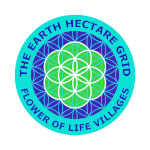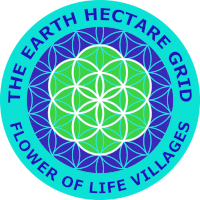
TREES
TREES, SHRUBS, BUSHESWhat kind of trees would you like to see on your estate? Are they fruit trees, nut trees, deciduous or evergreen trees, or a mixed composition? And what kind of shrubs and bushes would you plant?
WHICH CLIMATE ZONE?
This page ‘TREES’ has five sub-pages titled: ‘DECIDUOUS’, ‘FRUIT- NUT TREES, CONIFERS and SHRUBS&BUSHES. They contain examples of trees and shrubs and bushes that flourish well in all climate zones, except for the poles and high in the mountains. For introduction, the trees and information depicted are based in the moderate climate zone of western Europe, but many of those can be found in several climate zones and regions all over the world.
The information is also focused on some contemplation as to why it is important to think about your choices for which types of trees to plant, suitable for the area or part of the world that you’re in.
LARGE DATABASE
A second focus is to show trees & shrubs and bushes that produce food and/or are evergreen.
In the long run a few pages might be added with a few examples of trees & shrubs from other climate-zones that are indigenous in those areas.
To include fruit- and nut trees & shrubs of all climate zones on this website, would require a large database.
Just of only the fruit-tree category are hundreds of thousands of fruit-species worldwide, and there are about a few dozen nut-trees, of which the nuts are edible for humans. (Because basically all nut-trees produce seeds as nuts, within fruit or a shell, but not all are edible).
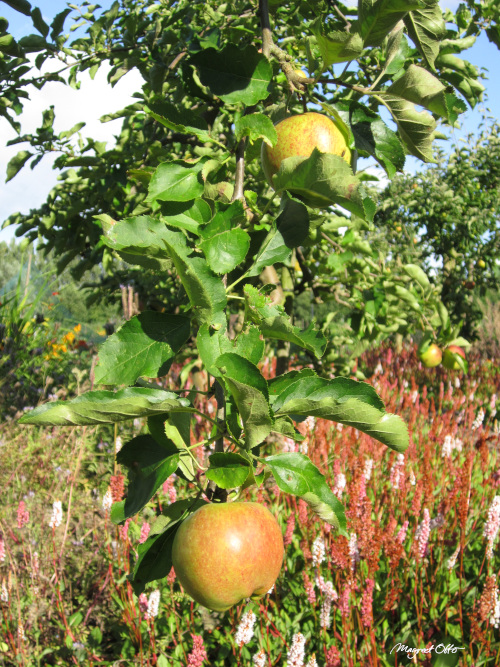
WHERE TO GET INFORMATION?
It would be really interesting to be able to consult such a database, and especially for the layman people who want to plant these trees, or even grow them theirselves. and want to learn how to propagate them.
Not everybody knows, but growing fruit- & nut trees is in many cases different from growing vegetables, and oftentimes more difficult. There are different methods to propagate the trees. And for using a good quality seeds to sprout, it might take much longer and they do so only under the right conditions.
And since the Earth Hectare Grid is green, consisting of living trees, shrubs and bushes, build by millions civillians and families worldwide, it would be great that the aforementioned database could be connected somehow!
VALUABLE INFORMATION
Thus information on how to pick the right trees & shrubs for the climate zone one is in, and where to get the seeds, and how to propagate them, is very valuable!
Thankfully the internet can give us a helping hand. And the residents of hectares-villages may certainly share their experiences and knowledge about these practices with each other and outside the villages.
SIX CLIMATE ZONES
Next is a little bit of information on climate zones which might alter with new insights or additions.
There are six main climate zones on our planet. When the Earth is seen as a globe with the northpole on top, five of the six climate zones are spread in horizontal layers from the northpole to the equator, and then again the same five climate zones in reverse from the equator to the southpole. The sixth climate zone is the higher altitudes in mountains (which are spread all over the world).
NORTHERN HEMISPHERE
1) Polar (The arctic circle, the northpole, top-region of the northern hemisphere).
2) Continental (The region below arctica).
3) Temperate (The middle region of the northern hemisphere), north is moderate, south is mediteranean.
4) Dry – North of the Equator, north is mediteranean, south is sub-tropical.
5) Tropical – Equator
6) Mountains (all over the world).
SOUTHERN HEMISPHERE:
6) Mountains (all over the world).
5) Tropical – Equator
4) Dry – South of the Equator, north is sub-tropical south is mediterean.
3) Temperate (The middle region of the southern hemisphere, north is mediterean, south is moderate).
2) Continental (North is moderate, south is polar).
1) Polar (Antarctica, the bottom-region of the southern hemisphere).
PUBLIC GREEN SPACE
Now what about all trees in our public spaces? For example, in the spring and summer, all deciduous trees in the public green space of the Netherlands bear green foliage. There is a lot of biodiversity among those trees and shrubs, and municipal employees look after them.
It is striking however, that most of those deciduous trees do not bear edible fruit or nuts for humans, livestock or wildlife (except for birds and small ground-animals such as mouses, moles, squirrels, rats, beavers, groundhogs, etcetera).
There are also a reduced amount of evergreen trees in this western part of Europe.
BARE TREES
As for the deciduous trees, when in fall the leaves begin to flutter down, the branches of many trees quickly become visible. And that is the bare image of ‘naked’ trees that determines our landscape for the following 6 months.
That is, for the northern hemisphere that we’re in, from the middle of the autumn period (October) until after the first weeks of spring (April).
And on top of that, most of those deciduous trees haven’t produced fruit or nuts in summer for us humans or wildlife to consume.
CULTIVATION PLAN
So for half of the year, the Netherlands for instance, is bare for a large part. Most of the green that can be seen are the many meadows that are kept for grazing cattle, but without any trees in sight.
Now, how is this for the country and part of the world you live in? Is your public space green throughout the year? Do these trees produce fruit and nuts, and how many evergreen trees are there in your habitat?
CULTIVARS?
On top of these observations, there is the bad news that many trees nowadays are cultivated to create a better or new look, or for example, for them to produce larger fruits, or grow faster for logging.
This has been going on for more than 50 years, probably even longer. The major disadvantage of this, is that these cultivated trees once they mature after 20 to 40 years, might not naturally reproduce or regenerate.
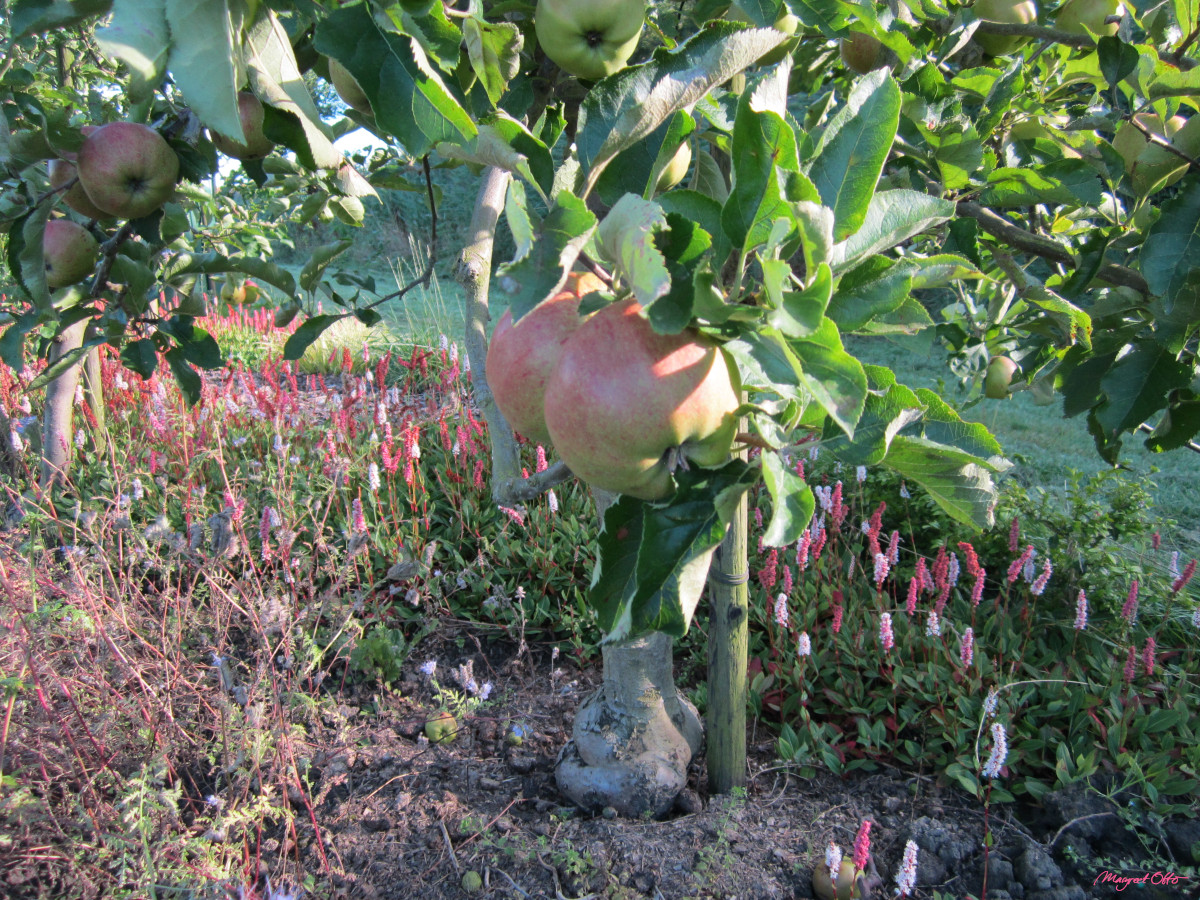
GRAFTED TREES
Many cultivated fruit trees are, for instance, ‘cloned’ through their branches, through a proces called ‘grafting’, and are not reproduced via their seeds.
Depicted above is a low-stem cultivated apple tree (of original centuries old high-stem heirloom apple trees).
At the foot of the stem one can see how in the past, one of its small branches has been grafted on the cut-off stem of another tree, a young sapling at the time, which over about 80 years has grown into a thick knot.
ADVANTAGE OF GRAFTING
The advantage of grafting is that one is assured to have another tree that produces the exact same fruit, which one might desire for its taste, texture or color, or all three of them. This way, there are now thousands of varieties of cultivated apple-races worldwide.
NATURAL SELECTION
Depicted below, a bee visits a blossom flower of an apple tree in spring, and pollinates it as such. Notice it carrying the pollen already sampled from other blossoms! Out of every fertilized flower grows an apple.
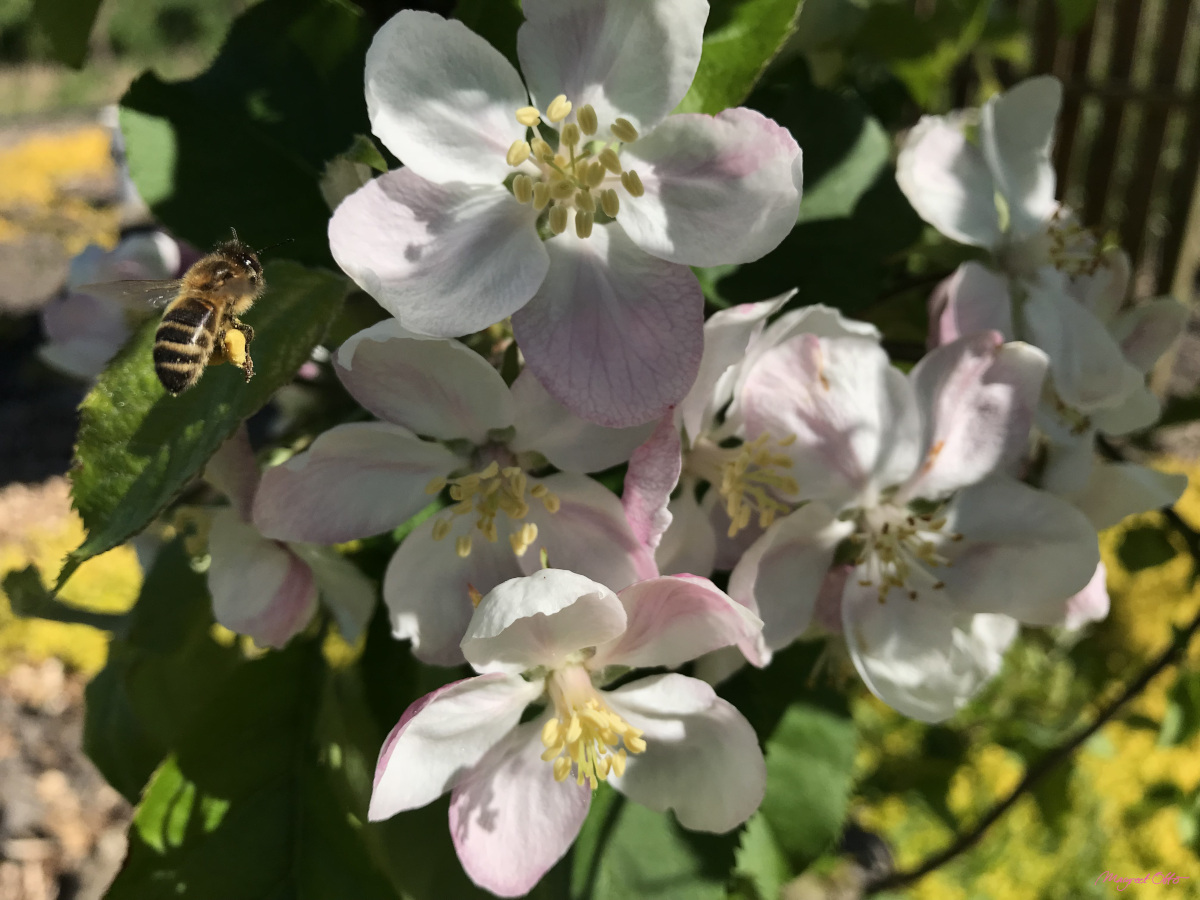
FATHER- & MOTHERHOOD OF TREES
The disadvantage of grafting trees might be that in the long run, when trees are cloned and cloned again, their seeds might produce fruit trees with some sort of degenerative problems, such as the production of weakened seeds later on when the trees have matured.
This is because when the seeds are fertilized by bees and other insects, or pollinated by the wind for other tree species, there is a natural selection of nature through the Father- & Motherhood of the plants.
After all, plants and trees have both sexes represented, either carried in monoecious or dioecious plants and trees.
DIVERSITY OF GENES
And the diversity of genes within the same species might be important. The cloning of trees through grafting is unnatural (except probably for when the trees theirselves produce roots on their branches, which are mostly seen with shrubs in warmer climate zones). Something to ponder on!!!
And unfortunately, there are also other methods of cultivation, the altering of genes in labarotory for instance. Thus it might be important to also allow nature to adhere to its ‘normal’ way for trees to reproduce, which is through their fertilized seeds by insects and bees or wind, spread by for instance birds.
Or… the seeds of fruittrees can also be spread by humans, who instead of throwing the apple-cores in the dustbin, plant them in the soil on their homesteads! And this particular fruit is probably the most mentioned and depicted fruit in sagas and legends.
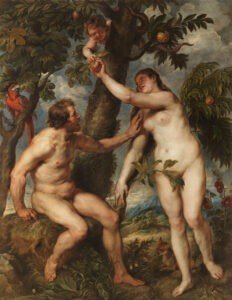
SUCH AS…
Adam and Eve by a high-stem apple tree. Original painting Titian c. 1550, here re-painted by Rubens 1628-1629. (Source Wikipedia).
ORGANIZED SELECTION
Another idea might be to plant fruit tree saplings that are grown from seed on the hectare-units for wildlife.
If the fruits that those trees produce after a few years, appear to be of lesser quality, wildlife might still appreciate it. In the long run, the timber can still be utilized by us humans.
Howwever, to bring back cultivated trees in their natural state might become a process of centuries or even hundreds of years. Because: How to bring back the trees and their seeds to their natural potency? That might be the next question.
Probably a bit of organized selection might be needed. Such as letting nature cross fruit varieties of the same kind, that are genetically compatible? Could a simple method be to plant those trees near each other in the same orchard? Thus cross-pollination is ensured by the bees.
Could the bees and the wind improve again the seed quality by their natural selection? It is known bees fly long distances, but if beehyves are close to the orchard’s vincinity, high chances are all the trees will be visited.
But we do not know in advance which tree variety combinations will provide the desired results. Thus seeds from trees which will produce a good quality fruits and nuts without them being grafted or genetically modified. So this might take some time!
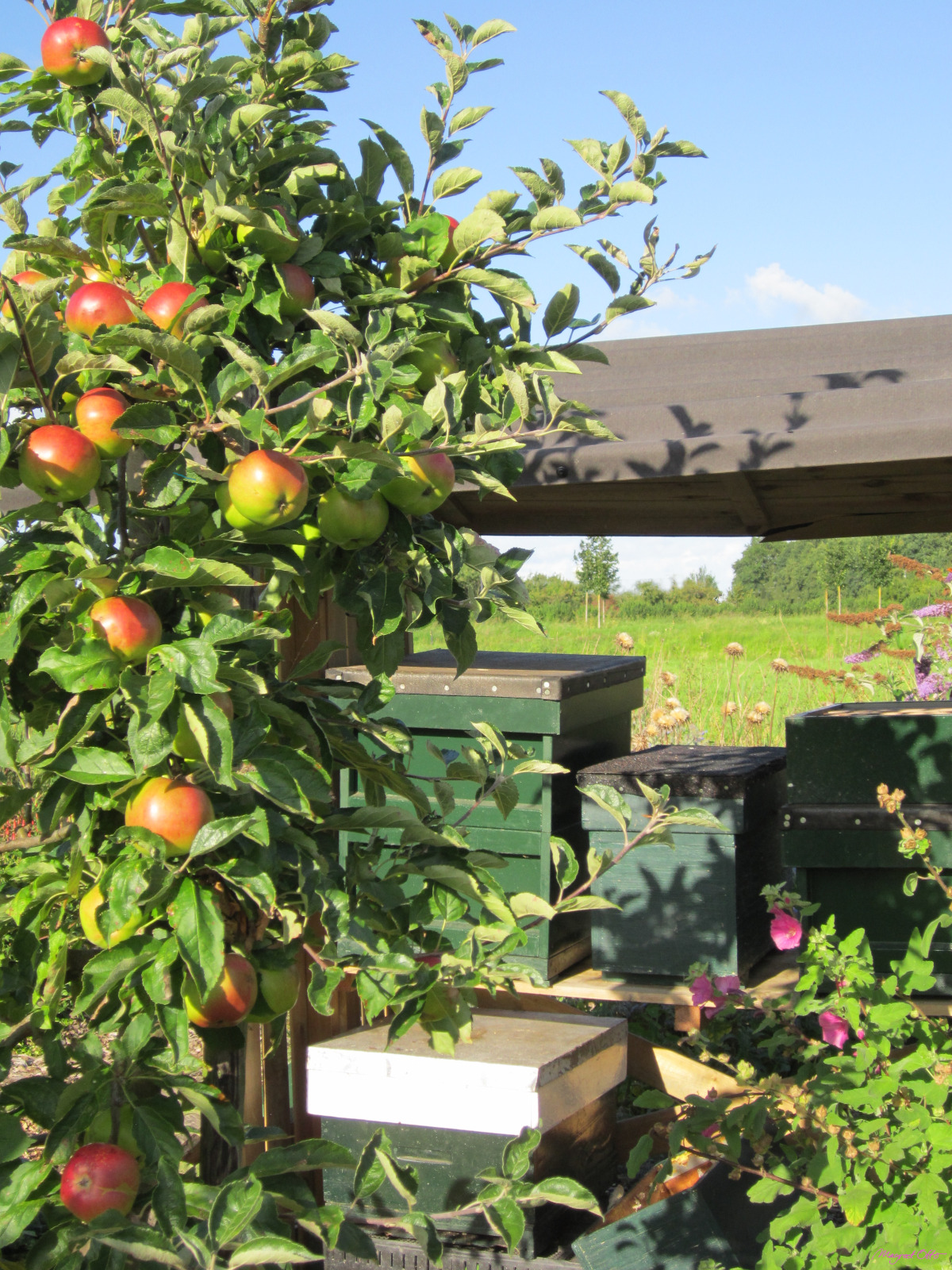
COMMERCE VERSUS NATURE
But humans are curious and like to experiment with things. It is also nowadays because people and companies are encouraged by governmental regulations to genetically alter plants and sell their cultivars for profit, whereas it is forbidden to sell natural seeds and plants the way we find them in nature.
It is also encouraged or allowed by the government to import trees and plants from other parts of the world, that are exotic, tropical, non-indigenous and non-residential in western Europe’s environment.
REMNANTS OF THE PAST
Also in the Netherlands for example, some tree species that grew naturally here for ages, including the conifer species that probably still grew abundantly here some 500 to 1000 years ago in wooded areas, are nowadays a rarity and have become remnants of a long forgotten past.
We know that from ancient times, trees such as pines and birches grew in the Netherlands, which were domestic and thus autochthonous, native for these parts of Europe. The birches are still seen here, but the original pines aren’t.
COMMERCIAL LOGGING, BIOMASS BURNING
Currently in a sense, we are looking at the cultivation plan of our green space from about twenty, to fifty, to a hundred years ago, and probably even longer.
Nowadays it is even also questionable what is left of that cultivation plan, given the increased commercial logging and biomass ‘power’ stations.
But how much ‘power’ is there really in burning trees on such a large scale & thus destroying nature, huh?
COMMON DECIDUOUS TREES
On the next pages are some examples of trees in the northern temperate climate zone -but are also found in other climate zones and regions of the world- that are deciduous in fall and winter, but also don’t produce food for humans or wildlife (except for birds and small ground-animals).
In this combination ‘deciduous & no food’ we’ll call them ‘common deciduous trees’, mainly categorized as ‘deciduous’. For more and next page, click on button ‘DECIDUOUS’ below.
